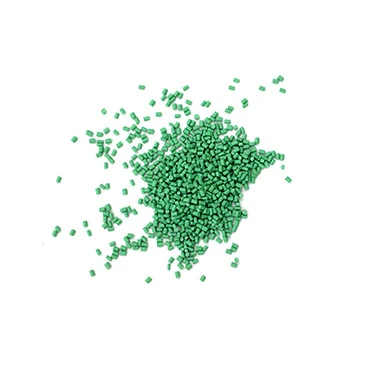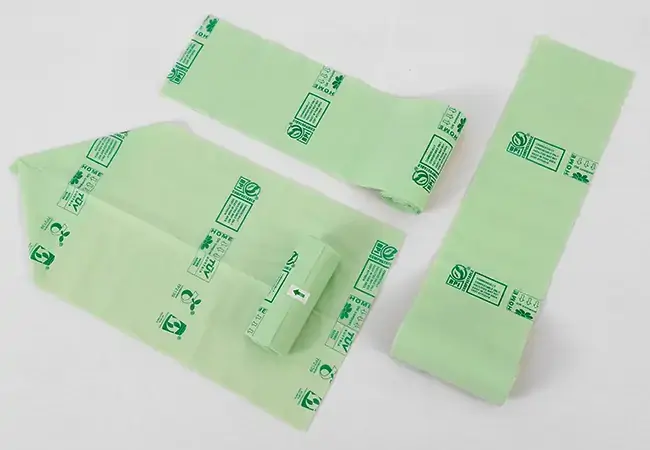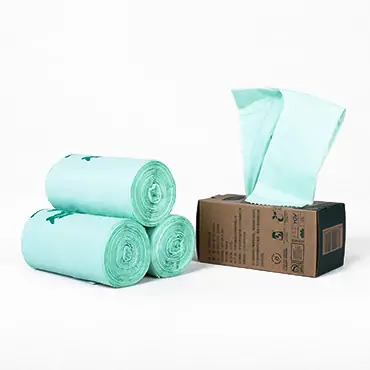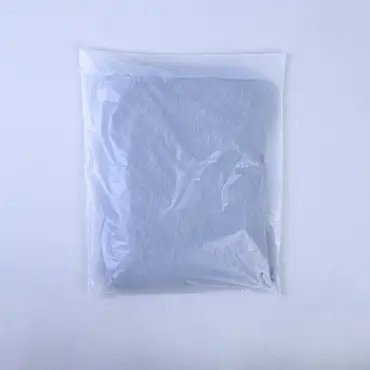You’re in the market for biodegradable and compostable bags, and that’s awesome! But with so many “green” claims floating around, how do you separate the real deal from the, well, not-so-real deal? The biodegradable compostable bags market is booming, but that also means there are a lot of products out there that aren’t as earth-friendly as they claim. This can be a big problem, both for the planet and for businesses trying to make responsible choices.
As a biodegradable and compostable bag manufacturer, we know how important it is to use authentic materials. So, let’s dive into the nitty-gritty of identifying truly biodegradable and compostable bags.
Why the Confusion? The Wild West of “Green” Bag Claims
Let’s be honest, the world of eco-friendly products can feel like the Wild West. Everyone’s slapping “green” labels on their products, but not all of them are created equal. This is where things get tricky, and where a little bit of knowledge can go a long way.
Biodegradable vs. Compostable: It’s Not the Same Thing
“Biodegradable” and “compostable” are not interchangeable terms. Think of it like this: all squares are rectangles, but not all rectangles are squares. In the same way, all compostable bags are biodegradable, but not all biodegradable bags are compostable.
Biodegradable simply means something can break down into smaller pieces over time. But how long? And into what? Some “biodegradable” plastics might just break down into smaller pieces of plastic (microplastics), which is a huge problem.
Compostable means something can break down into organic matter (like soil) under specific conditions (like in a compost facility). This is a much higher standard. A biodegradable and compostable bag that is produced by a reliable manufacturer is sure to decompose within the given time, about 3-6 months.
Greenwashing: Don’t Be Fooled by Misleading Labels
Unfortunately, some companies use the term “biodegradable” loosely to make their products seem more environmentally friendly than they are. This is called “greenwashing.” They might use vague terms or misleading imagery to trick you into thinking you’re making a sustainable choice when you’re actually not.
The Ultimate Guide to Identifying Biodegradable and Compostable Bags
Alright, now that we’ve cleared up the confusion, let’s get to the good stuff: how to spot authentic biodegradable compostable bags.
Decoding the Secret Language: Certifications and Logos
The easiest way to know if a bag is truly biodegradable and compostable is to look for certifications from reputable organizations. These certifications are like secret handshakes that let you know you’re dealing with the real deal. These are your best friends in the fight against greenwashing.
-
BPI Certification: The Gold Standard (USA)
The Biodegradable Products Institute (BPI) is a leading authority in North America. Their certification is a big deal. If a bag has the BPI logo, you can be confident it meets strict standards for compostability in industrial facilities.
-
DIN CERTCO: Your European Assurance (Germany)
DIN CERTCO is a highly respected German certification body. They offer certifications for both industrial and home compostability, following the EN 13432 standard. You can trust that a bag is compostable when it has the DIN CERTCO certification.
-
TUV AUSTRIA: The Belgian Stamp of Approval
TUV AUSTRIA is another major player in Europe. They offer the “OK Compost” and “OK Compost Home” certifications, which are widely recognized.
-
“Home Compostable” vs. “Industrial Compostable”
Pay close attention to whether a bag is certified for “home” or “industrial” composting.
Industrial composting facilities use high temperatures and controlled conditions to break down materials quickly.
Home composting is a slower process that happens in your backyard compost bin.
A bag certified for industrial composting might not break down properly in a home compost pile. A bag certified for “home” will decompose at a home compost pile, while one that is certified for “industrial” won’t, because a home compost pile has a lower temperature than an industrial compost pile.

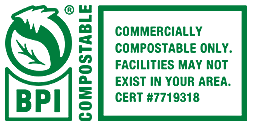

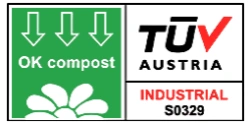
The Touch Test: Feeling Your Way to the Truth
Biodegradable compostable bags often have a slightly different texture than conventional plastic bags. They might feel softer, almost silky, due to the plant-based materials they’re made from. Conventional plastic bags, on the other hand, tend to feel more rigid and smooth. It’s a subtle difference, but it can be a clue.
The Sniff Test: Does it Smell Like Nature or Nasty Chemicals?
Okay, this one might sound a little weird, but give it a try! Compostable bags made from materials like cornstarch or other plant-based materials might have a faint, earthy smell – almost like popcorn or grain. It’s a natural, organic scent. If you don’t smell anything, that can be a good sign, too. On the other hand, common plastic bags often have a distinct plastic-y, chemical smell that can be quite strong and unpleasant.
The Burn Test (Use with Extreme Caution!) – What Happens When They Go Up in Flames?
This test should be done carefully and responsibly, preferably in a controlled environment, and is generally not recommended. It’s best to rely on certifications.
If you do decide to do a burn test, here’s what you might observe:
Conventional plastic bags will typically burn with thick, black smoke, and a strong, acrid smell, and leave behind hard, melted plastic residue. This is because they are made from petroleum-based materials.
Biodegradable and compostable bags may burn more cleanly, with less smoke and a less offensive odor. They might leave behind a lighter-colored ash that resembles burnt paper or wood.
Important Note: Burning any type of plastic can release harmful fumes, so this test should only be done as a last resort and with proper ventilation.
Time is the Ultimate Test: Will They Vanish or Linger for Centuries?
True biodegradable compostable bags will break down completely in a composting environment within a specific timeframe (usually a few months). On the other hand, regular plastic bags can take hundreds of years to decompose; even then, they might break down into microplastics.
Why It Matters: Protecting Your Business and the Planet
Choosing authentic biodegradable and compostable bags isn’t just about being trendy – it’s about doing what’s right for your business and the environment.
- Consumer Demand: More and more consumers are looking for sustainable options. Offering genuine eco-friendly bags can boost your brand image and attract environmentally conscious customers.
- Regulations: Many regions are implementing stricter regulations on single-use plastics. Using certified compostable bags can help you comply with these laws and avoid potential fines.
- Environmental Responsibility: By choosing compostable bags, you’re helping to reduce plastic pollution, conserve resources, and promote a circular economy.
Partner with a Trusted Manufacturer: Your Source for Authentic Biodegradable and Compostable Bags
As a leading manufacturer of biodegradable and compostable bags, we understand the importance of quality and authenticity. We use only certified materials and adhere to the highest industry standards.
When you partner with us, you can be confident that you’re getting:
- Certified Products: Our bags are certified by reputable organizations like BPI, DIN CERTCO, and TUV AUSTRIA.
- Customization Options: We offer a wide range of sizes, styles, and printing options to meet your specific needs.
- Expert Support: Our team is here to answer your questions and help you choose the right bags for your business.
- Reliable Supply: We have the capacity and expertise to meet your demands, no matter how large or small.
Conclusion: Be a Part of the Solution, Not the Problem
The switch to biodegradable and compostable bags is a crucial step towards a more sustainable future. By learning how to identify authentic products and partnering with a trusted manufacturer, you can make a real difference. Let’s work together to reduce plastic waste and create a healthier planet!
FAQs
Q: What are biodegradable and compostable bags made from?
A: They’re typically made from plant-based materials like cornstarch, sugarcane, or other renewable resources.
Q: How long does it take for a biodegradable and compostable bag to decompose?
A: It depends on the specific material and the composting conditions, but it usually takes a few months in an industrial composting facility.
Q: Can I put biodegradable and compostable bags in my regular trash bin?
A: It’s not recommended. They’re designed to break down in composting environments, not landfills.
Q: Are biodegradable and compostable bags more expensive than conventional plastic bags?
A: They can be slightly more expensive, but the price is coming down as demand increases. Plus, the environmental benefits are worth the investment!
Q: How can I be sure a manufacturer is legitimate?
A: Ask for certifications, inquire about their manufacturing processes, and look for testimonials or case studies.
Q: What is the difference between biodegradable and compostable bags?
A: Biodegradable bags are designed to break down into smaller pieces over time. However, the timeframe and the end products of this breakdown can vary greatly. Some biodegradable bags might simply fragment into smaller pieces of plastic, known as microplastics, which can persist in the environment and pose a threat to wildlife and ecosystems.
Compostable bags, on the other hand, are a subset of biodegradable bags with a more specific and stringent end-of-life scenario. They are designed to decompose completely into organic matter under specific composting conditions, such as those found in industrial composting facilities or well-managed home compost piles. This process typically occurs within a relatively short timeframe, usually a few months, and results in the production of nutrient-rich compost that can be used to enrich soil.
Q: What are the benefits of using compostable bags?
A: Using compostable bags offers several environmental benefits. Firstly, they help reduce the amount of plastic waste that ends up in landfills or incinerators, thereby mitigating the negative impacts of plastic pollution on ecosystems and human health. Secondly, compostable bags contribute to the creation of nutrient-rich compost, which can be used to improve soil fertility and reduce the need for chemical fertilizers. Additionally, by diverting organic waste from landfills, composting helps reduce greenhouse gas emissions, particularly methane, a potent greenhouse gas produced during the anaerobic decomposition of organic matter in landfills.
Q: Are there any regulations or standards governing compostable bags?
A: Yes, there are several regulations and standards that govern the production and labeling of compostable bags. These standards ensure that bags marketed as compostable meet specific criteria for biodegradability, disintegration, and ecotoxicity. Some of the most widely recognized standards include:
ASTM D6400 (United States): This standard specifies the requirements for plastics designed to be composted in municipal and industrial aerobic composting facilities.
EN 13432 (Europe): This standard outlines the requirements for packaging recoverable through composting and biodegradation. It includes criteria for chemical composition, biodegradability, disintegration, and compost quality.
AS 4736 (Australia): This standard specifies the requirements for biodegradable plastics suitable for industrial composting.
AS 5810 (Australia): This standard outlines the requirements for biodegradable plastics suitable for home composting.
Q: How can businesses ensure they are using authentic compostable bags?
A: To ensure they are using authentic compostable bags, businesses should look for products that are certified by recognized third-party organizations, such as the Biodegradable Products Institute (BPI) in the United States, DIN CERTCO in Germany, and TUV AUSTRIA. These organizations conduct rigorous testing and certification processes to verify that products meet the relevant standards for compostability. Additionally, businesses should carefully review product labels and packaging for certification marks and logos, and they should request documentation from suppliers to confirm the authenticity of the certifications.


